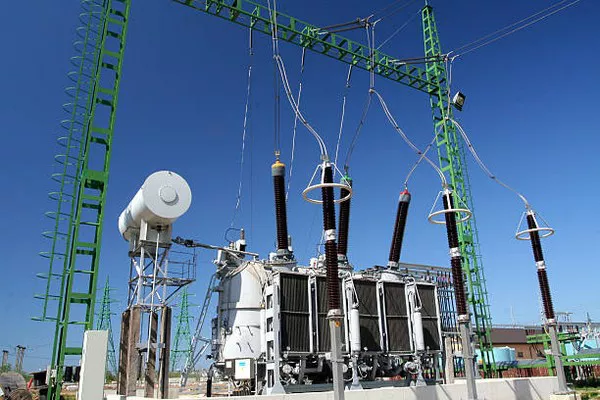Transformers have been a cornerstone of electrical engineering since their invention in the late 19th century. Traditionally, transformers have primarily been associated with alternating current (AC) voltage conversion. However, as our energy needs and technological landscape have evolved, so too have the functions of transformers. One notable evolution is the adaptation of transformers for direct current (DC) power conversion. In this article, we will explore the fascinating journey of how transformers have transitioned from their AC-centric origins to becoming integral components in modern DC power systems.
The Origin of Transformers and AC Power
The invention of the transformer is credited to William Stanley, who in 1886 developed the first practical transformer design. Transformers quickly became a vital part of electrical systems, especially in the distribution of AC power. The primary function of transformers in AC systems is to change voltage levels, allowing for efficient transmission of electrical energy over long distances. They do this by utilizing the principles of electromagnetic induction, which enables a step-up or step-down in voltage while maintaining the frequency of the AC waveform.
The Relationship between Transformers and AC Power
Transformers and AC power have an inseparable relationship, primarily because of the advantages AC power offers for long-distance transmission. AC power is easily transformed to higher or lower voltage levels using transformers, which minimizes energy loss during transmission. This characteristic made AC power the preferred choice for early power distribution systems, including the iconic “War of Currents” battle between Thomas Edison’s DC and Nikola Tesla’s AC systems, with AC emerging as the victor.
The Advent of DC Power
While AC power gained dominance, DC power was not forgotten. In fact, it was used extensively in early electrical systems, particularly for local power distribution and in applications where a steady, unidirectional flow of electricity was required. However, DC power had its limitations, notably the difficulty of changing voltage levels efficiently and the challenges of long-distance transmission.
Enter the DC-DC Converter
To address the limitations of DC power, engineers developed DC-DC converters. These devices use electronic circuits, rather than electromagnetic principles, to change the voltage levels of DC power. DC-DC converters are commonly used in various applications, including portable electronics, renewable energy systems, and electric vehicles. They play a pivotal role in transforming DC power for specific purposes and are an essential part of modern technology.
The Rise of DC Power in Modern Applications
In recent decades, we have witnessed a resurgence of DC power in various technological applications. This resurgence can be attributed to several factors:
Energy Efficiency: DC power distribution is often more energy-efficient than AC, particularly in data centers, telecommunications, and some renewable energy systems. With the growing emphasis on energy conservation, DC power is gaining favor in these domains.
Renewable Energy: Solar panels and wind turbines generate DC power, which is then converted to AC for grid integration. As renewable energy sources become more prevalent, the need for efficient DC-AC conversion and vice versa has grown.
Electric Vehicles (EVs): EVs primarily use DC power for their battery systems and electric motors. This necessitates advanced DC-DC converters and charging infrastructure to support the widespread adoption of electric vehicles.
Data Centers: Data centers, the backbone of the digital age, rely heavily on DC power to minimize energy losses and improve the performance of critical equipment. DC distribution within data centers has become a standard practice.
Transformers in the Age of DC
The transition to DC power in various applications has brought about a transformation in the role of transformers. While traditional transformers remain essential in AC power transmission and distribution, new types of transformers have emerged to facilitate DC power conversion and distribution.
DC-DC Transformers
DC-DC transformers, also known as isolation transformers, are designed to convert DC power from one voltage level to another efficiently. They play a crucial role in applications where precise voltage regulation, galvanic isolation, and minimal power loss are essential. DC-DC transformers are commonly used in industries such as telecommunications, aerospace, and automotive for their ability to provide stable and isolated DC power.
Solid-State Transformers
Solid-state transformers represent a significant advancement in the world of electrical transformers. These devices use semiconductor technology to convert AC to DC and vice versa, providing greater flexibility and control over voltage levels and power flow. Solid-state transformers are instrumental in enhancing the efficiency and reliability of modern power distribution systems, especially those incorporating renewable energy sources and energy storage.
Conclusion
The evolution of transformers from their origins in AC power systems to their pivotal role in DC power conversion highlights the adaptability and versatility of this fundamental electrical component. While AC power remains predominant in many aspects of our lives, the resurgence of DC power in modern applications has led to the development of specialized transformers, such as DC-DC transformers and solid-state transformers. These transformers are critical in enabling the efficient conversion, distribution, and utilization of DC power, ushering in a new era of energy efficiency and sustainability in the electrical industry. As technology continues to evolve, transformers will undoubtedly continue to play a central role in shaping the future of power systems.

